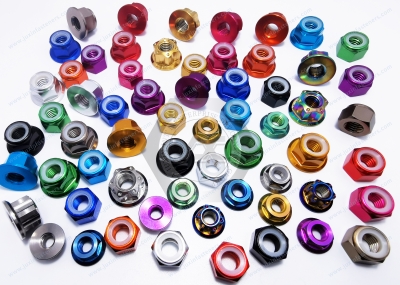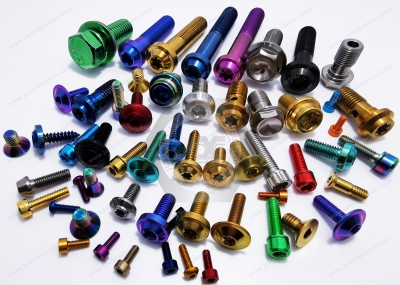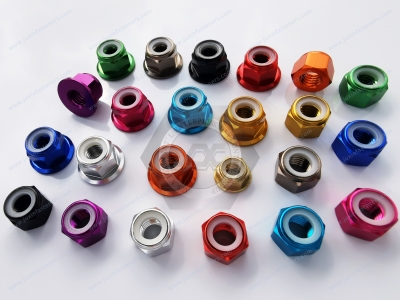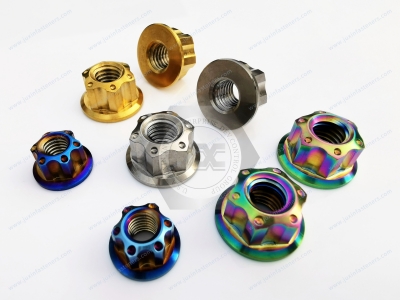Call Us
+86 136 6007 9809
Call Us
+86 136 6007 9809
Oct. 31, 2023
Thread is a typical structure on the parts, is widely used in connecting the parts, and can transfer Rolement and power. The threaded connection is a widely used removable fixed connection, with the advantages of sizeable connecting force, compact structure, easy disassembly, reliable connection, etc. Using the characteristics of the thread, threaded fastener connection design can achieve standardization, scale, specialization, and intensive production, significantly reducing production costs. As a result of threaded fastener varieties and specifications, most of them are specialized, centralized production, use more stringent requirements, and more factors affecting their anti-loosening performance, which undoubtedly increases the difficulty of fastener connection design.
Once the failure occurs, some critical parts of the bolt connection will befallable losses to the enterprise, so the automotive threaded fastener connection design is essential. Restricted by the principle of threaded structure, loosening is one of the primary failure forms of threaded fasteners; adequate measures must be taken to prevent loosening, so a variety of anti-loosening threaded fasteners came into being.
The automobile industry is a strategic and pillar industry of the national economy, which plays a vital role in social and economic development, and the development level of the automobile industry is an important indicator to measure the country's comprehensive national strength and scientific and technological progress. Threaded fasteners are the cornerstone of the development of the automobile industry and an essential part of the industry chain. The quality and life of threaded fasteners are directly related to the stability of the whole automobile and affect the development of the entire industry, so the design of automobile threaded fastener connection should be optimized continuously to improve the quality of automobile threaded fasteners.
一、Overview of automotive fasteners
Automotive fasteners refer to the two or more parts that will be fastened to become whole when a class of mechanical parts is used. The automotive fasteners market is extensive. Automotive fasteners commonly used in bolts, studs, nuts (rivet nuts), screws, washers, fixtures, plastic snap rivets, plastic inserts, nuts, etc., visible threaded fasteners (a kind of mechanical parts with internal or external threads) are more common.
二、Overview of automotive threaded fastener connections
All working standards specify the grounding stresses of threaded fasteners to ensure that the characteristic index values of threaded fasteners and the selection of threaded fasteners by the specification requirements complete the basic threaded connection design.
1. The application standard and environment of the equipment are indicated. Next, specify the various stresses of the component.
2. Perform structural mechanics calculations based on various criteria for non-failure of components and technical criteria for threaded parts based on numerical requirements.
3. Selection of threaded fasteners that meet the requirements and standards to increase the type and number of fasteners. To simplify the analysis and calculation of the bearing capacity, the external force on the threaded fasteners is divided into four categories:
Pure tensile stress: such as cylinder head foot bolt.
Pure shear stress: such as water pump flywheel foot bolt.
Tensile stress + stress: such as crankcase foot bolt.
Tensile stress + stress + shear stress: such as automobile wheel foot bolts. The radial preload obtained from a threaded connection is affected by several factors such as friction, tightening method, and precision of the unique tool, and a specific radial preload can be measured ultrasonically. Since precise force measurements are required to characterize the radial preload process, it is necessary to specify the minimum radial preload needed in the application early in the design process.
三、 Role of automotive th Roleed fasteners
1. Fixing Role: automotive threRole fasteners can tightly connect two principal parts or components into a whole, which can fix the cylinder head on the cylinder block, select the bracket on the frame, and fix the crankshaft to the bearing housing. In this case, tensile stress is applied to the threaded fastener and causes the automotive part to be held in place, and unless the tensile strength is strong enough, the fixed part will not loosen.
2 . Force Transmission: When two rotating parts are connected by threaded fasteners, the torque from that part is transmitted to the other through the threaded connection. For example, bolts connect front and rear driveshafts and half-shaft flanges to hubs, rims, and wheels in automobiles. In this case, the bolts are subjected to shear and tensile stresses.
3. Connection role: threaded fasteners have a connection role needed to disassemble the parts are usually connected with threaded fasteners to facilitate the disassembly, such as automotive engine oil pan and crankcase connection, air filter and carburetor upper body connection, a variety of electrical wires, and electrical parts connection.
4. Positioning role: some essential parts of the car maintain a relatively close relative position relationship; this relationship can be changed or adjusted, adjusted, with bolts or screws to fix the relative position. For example, in the gasoline engine distributor and circuit breaker, moving contacts and selected contacts, after adjusting the gap, are set with threaded fasteners so that they do not loosen.


四、Threaded fastener connection loosening causes
1. Deformation of the joint surface: when connecting with bolts, a certain amount of preload will be applied so that the bolt undergoes tensile deformation and causes local plastic deformation of the contact surface with the bolt. If the plastic deformation continues to occur during use, there will be a slight sliding between the bolt and the supporting surface, thus reducing the preload force and making the bolt connection loose.
2. Loosening due to axial load: When an axial load is applied to a threaded connection with an initial preload, the axial force stretches the bolt. The radial component force acts on the beveled surface of the thread, and there is a particular relative slip between the contact surfaces. The relative slip gradually increases with repeated loading. When the threaded connection reaches a self-locking state, the nut loosens and rotates, resulting in connection failure.
3. Loosening due to transverse load: When the threaded connection with initial preload is subjected to transverse load perpendicular to the axis, the repeated action of the transverse force makes the threads undergo elastic torsional deformation, or there is relative slip perpendicular to the direction of the thread axis between the contact surfaces of the parts. The torsional displacement that gradually develops and accumulates causes the helical pair to slide downward in the winding direction, thus reducing or eliminating the prestressing force, which causes the threaded connection to loosen.
Due to variable loads, shocks, and vibrations, the above factors often act simultaneously. In addition, significant variations in operating temperatures and other factors can also lead to loosening of threaded fastener connections.
五、Automotive threaded fastener connection design
1. Connection design overview: When carrying out automotive threaded fastener connection design, it is necessary to have a clear understanding of the various grounding stresses of threaded fasteners under typical and extreme working conditions, according to CAE analysis software simulation and analysis or real-time collection of the road load bearing capacity, specify the specifications of the threaded fasteners, select the threaded fasteners according to national standards, and ensure that they do not deviate from the specifications and standard tolerances.
The following aspects need to be noted when carrying out the design of the threaded fastener connection:
First, whether there is a moisture-proof requirement;
Second, whether there are conductivity requirements.
Third, whether there is a requirement for high-temperature operating conditions;
Fourth, whether the need for frequent disassembly;
Fifth, whether there is color adjustment;
Sixth, what are the provisions for corrosion protection;
Seventh, whether it should be tightened;
Eighth, whether the need for washers.
Ninth, the installation and other parts of the spacing should meet the requirements;
Tenth, clear thread code;
Eleventh, pay attention to friction control. In the choice of coarse and fine screw fasteners, M10 and M10 or more specifications recommended selection of fine screws. The reason is as follows:
First, the radial adjustment ability;
Second, the exact specifications can provide a higher clamping force; third, the spiral angle is slight, with a small torque can enhance the axial force and, at the same time can improve the resistance to loosening;
Fourth, higher torsional and transverse shear stress; Fifth, thick-walled parts and high-toughness parts can be more firmly connected;
Sixth, the threads can be closer to the head of the ground bolt;
Seventh, it is not easy to fall off.
2 Design requirements
First, bolts and nuts need to be matched. Generally speaking, a nut with a higher performance level can replace a nut with a lower performance level, and it is feasible for the stress of the bolt-nut assembly to be higher than the yield strength of the bolt or the guaranteed stress.
Second, process engineers must fully communicate and carefully consider the fixing and installation process technology.
Third, the fastener design must incorporate dynamic and static data torque. Dynamic torque requirements are publicized when installation and handling techniques are disclosed, and static torque requirements are published in the process management plan.
Fourth, fasteners should be designed in visible locations that are easy to install and remove to prevent blind handling to ensure product quality.
Fifth, in the installation of inconvenient places such as intermediate shafts, the steering device installation position should be designed to prevent followers and product quality problems due to actual operation.
Sixth, do not consider using a universal sleeve, with which fastening will lead to torque changes.


六、Threaded Fastener Processing
6.1 Galvanizing: Zinc plating refers to the surface of the metal, alloy, or other materials coated with a layer of zinc to play a beautiful, rust-proof role in surface treatment technology; the primary method is hot-dip galvanizing. Zinc is soluble in acids and alkalis and does not change much in dry air. In humid air, the surface can produce a very dense film of zinc alkali carbonate, which can effectively protect the interior from corrosion. Hot-dip galvanizing reacts with molten metal and the iron substrate to produce an alloy layer. In contrast, electro-galvanizing is the process of using the principle of electrolysis to form a homogeneous, dense, well-bonded zinc coating on the surface of the manufactured part. Alkali brittleness in the traditional hot-dip galvanizing process is challenging to get rid of. The disadvantages of alkali brittleness on the raw materials, machinery, and equipment performance are very harmful and will shorten the life of the parts, resulting in equipment destruction.
6.2 Zinc-aluminum coatings
Zinc-aluminum coatings are water-soluble, chromium-free, zinc-aluminum architectural coatings that can be dipped, brushed, or sprayed onto the surface of steel or prefabricated parts. The zinc-aluminum coating is a water-based, chromium-free, zinc-aluminum coating dipped, brushed, or sprayed onto the surface of steel parts or components, baked to form an inorganic anti-corrosion coating (greyish in appearance) with scaled zinc as the main ingredient, which is an emission-free coating without the addition of heavy metals chromium and lead. Compared with conventional zinc-chromium anti-corrosion coatings, zinc-aluminum coatings have the following characteristics: they are free of metal chromium, have good corrosion, and are high-temperature resistant. Its deep plating performance and re-blasting performance can be applied to the corrosion protection of a wide range of substrate materials such as steel, cast iron, aluminum and its alloys, and iron-based powder metallurgy. Due to the elements of the high-temperature baking forming process, the zinc-aluminum coating construction process will not cause hydrogen embrittlement problems, and aluminum and aluminum alloy will not produce galvanic corrosion. The zinc-aluminum coating can replace the zinc-chromium coating and part of the zinc and cadmium plating processes.
6.3 Phosphatization
Steel parts organically dissolved in a phosphate solution containing manganese, iron, zinc, and calcium, the surface will generate a layer of water-insoluble phosphate protective film (phosphate film); this process is called phosphating. The purpose of phosphating is mainly to protect the metal, prevent corrosion of the metal, use it to paint before priming, and improve the paint coating adhesion and corrosion resistance. Phosphate film has a dark gray or black appearance, with a microporous plate structure, and after filling, oil immersion, or paint treatment, has good corrosion resistance.
Phosphate film also has good lubricity and can reduce friction and prevent or reduce the surface layer from scratching or cracking. In addition, the phosphating movie also has good insulating properties; after phosphating treatment, the structural and mechanical properties of steel and magnetic properties remain unchanged. Phosphating required equipment is simple, easy to operate in practice, low cost, high efficiency, and widely used in industry. According to the composition of the phosphating solution, phosphating can be divided into zinc phosphating, zinc-calcium phosphating, iron phosphating, manganese phosphating, and compound phosphating; according to the phosphating treatment temperature, phosphating can be divided into high-temperature type, medium-temperature type, low-temperature type, room temperature type.
6.4 Dacromet
Dacromet is a new surface treatment technology, mainly zinc powder, aluminum powder, chromic acid, and deionized water as an anti-corrosion coating. Dacromet has many advantages: First, it has super corrosion resistance, and the rust prevention effect is 7 ~ 10 times the traditional electro-galvanizing, hot-dip galvanizing, or paint coating method. Dacromet processed standard parts and pipe fittings by salt spray test more than 1200 h did not appear red rust; second, it will not cause hydrogen embrittlement phenomenon. The dacromet treatment process determines Dacromet.
There is no hydrogen embrittlement phenomenon, which makes Dacromet very suitable for coating on the stressed parts; third, heat resistance. Dacromet is resistant to corrosion of high-temperature materials and heat-resistant temperatures up to 300 ℃ or more. In the traditional galvanizing process, when the temperature reaches 100 ℃, the material will appear to be a peeling phenomenon. Fourth, Dacromet coating has strong adhesion and re-coating properties, and the metal substrate has a reasonable bonding force. Other additional coatings have a strong adhesion; the treated parts are easy to spray color, and the bonding strength of organic coatings is even more than the phosphating film. Fifth, permeability is muscular. Due to the electrostatic shielding effect, the workpiece's deep holes, crevices, and inner walls are challenging to galvanize, so you can not use electroplating methods to protect these parts of the workpiece. Dacromet can go into different workpiece parts to form a Dacromet coating.
Dacromet also has some disadvantages: First, Dacromet sintering temperature is high, long time, and energy consumption; Second, Dacromet surface hardness is not high, poor abrasion resistance, Dacromet-coated products are not suitable for copper, magnesium, nickel, stainless steel parts in contact and connection. Otherwise, it will affect the surface quality of the products and corrosion resistance. Third, Dacromet coating conductivity is poor and not applicable to electrical appliances such as grounding bolts and other conductive connection parts.
6.5 Zinc-nickel alloy
Zinc-nickel alloy surface treatment is a standard metal surface treatment technology that can improve zinc-nickel alloy's corrosion resistance, hardness, and aesthetics.
Corrosion resistance: the electrode potential of the coating is more damaging than the electrode potential of steel, so this alloy coating is a sacrificial anodic protective coating; the advantage of this type of coating is that, in the case of damage to the coating, the coating around the damage can still effectively protect the substrate from cathodic corrosion.
The coating has excellent resistance to atmospheric corrosion and seawater corrosion performance, especially practical in high heat, high cold, intense humidity, and hot tropical areas; its corrosion resistance to the same coating thickness of zinc metal layer higher than 7 ~ 10 times, neutral salt spray test shows: the thickness of 5 ~ 8-micron zinc-nickel alloy plating time of red rust in more than 1,300 hours, and the exact plating thickness of zinc metal red rust time of only 140 hours. One hundred forty hours. In addition, zinc-nickel alloy coating in the red rust and red rust expansion are much slower than metal zinc coating.
七、Automotive threaded fasteners improvement direction
To improve the quality of fastener products, it is necessary to strictly control the quality of the selected steel and the production process, and it is essential to strictly control the chemical composition of the steel used to reduce the content of sulfur, phosphorus, and oxygen elements in the steel. Otherwise, it will lead to cracks in the production process of fasteners. In the process of producing automotive fasteners, we need to adopt advanced production equipment, use the appropriate production process, and improve the product qualification rate to improve the quality of automotive fasteners. When heat treating the fasteners, the furnace temperature, atmosphere, and time must be strictly controlled to avoid surface burns and decarburization of the fasteners. Although manufacturers strictly control the production process, ensuring that all products are qualified parts is still difficult. Therefore, sorting and testing are required after production is completed.
八、Conclusion
Automotive fasteners are an essential part of the automotive industry chain, and various factors must be considered when designing fastener connections. At the same time, processing technology is also critical and deserves a lot of attention. In creating automotive fastener connections, it is necessary to use advanced automotive fastener processing technology while adhering to the relevant design principles and requirements, continuing to learn from and innovate to promote the development of the automotive industry better.
If you are looking for high-quality fastener screws & all kinds of plastic fasteners or technical support for structural design, please get in touch with me. Use our new Product Finder tool, download our Product Catalog, and let us help you get custom parts.adelajonly@gmail.com. Thanks. Website: www.juxinfasteners.com
Contact Us
Tel.:
+86 020 8621 0320
+86 020 3121 6067
Technical Support:
Navigation
SEND INQUIREY